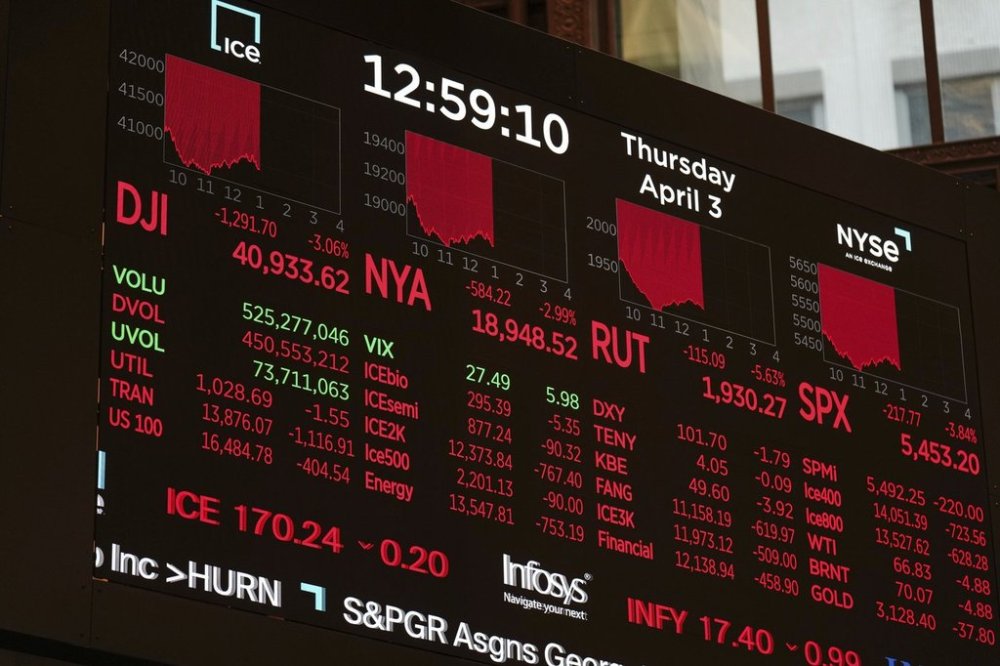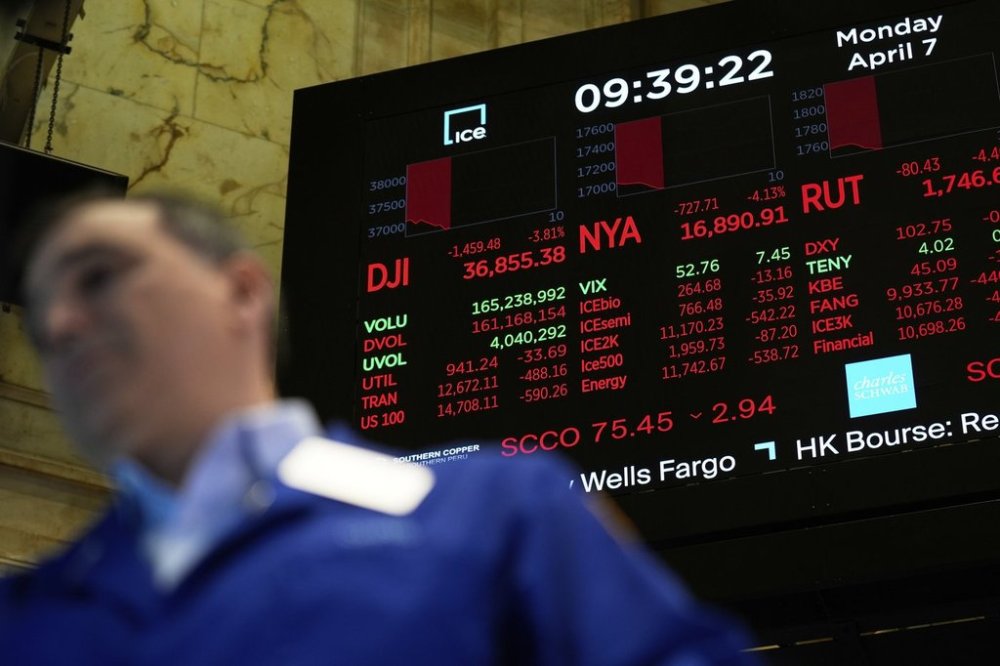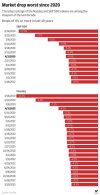Markets mixed after volatile trading day amid ongoing U.S. tariffs concerns
Advertisement
Read this article for free:
or
Already have an account? Log in here »
To continue reading, please subscribe:
Monthly Digital Subscription
$0 for the first 4 weeks*
- Enjoy unlimited reading on winnipegfreepress.com
- Read the E-Edition, our digital replica newspaper
- Access News Break, our award-winning app
- Play interactive puzzles
*No charge for 4 weeks then price increases to the regular rate of $19.00 plus GST every four weeks. Offer available to new and qualified returning subscribers only. Cancel any time.
Monthly Digital Subscription
$4.75/week*
- Enjoy unlimited reading on winnipegfreepress.com
- Read the E-Edition, our digital replica newspaper
- Access News Break, our award-winning app
- Play interactive puzzles
*Billed as $19 plus GST every four weeks. Cancel any time.
To continue reading, please subscribe:
Add Free Press access to your Brandon Sun subscription for only an additional
$1 for the first 4 weeks*
*Your next subscription payment will increase by $1.00 and you will be charged $16.99 plus GST for four weeks. After four weeks, your payment will increase to $23.99 plus GST every four weeks.
Read unlimited articles for free today:
or
Already have an account? Log in here »
Hey there, time traveller!
This article was published 07/04/2025 (250 days ago), so information in it may no longer be current.
TORONTO – North American stock markets muddled to a mixed close Monday as the effects of U.S. President Donald Trump’s latest tariff announcement continued to reverberate.
Markets began the day with a steep selloff, before suddenly spiking higher in the morning — the S&P 500 briefly rose 3.4 per cent before giving up those gains.
A White House account on X said a rumour that Trump was considering a 90-day pause on the tariffs was “fake news,” taking the air out of the short-lived bounce.

“I think that these elevated levels of volatility are going to be with us for the next couple of weeks,” said Ilana Schonwetter, investment adviser and portfolio manager at Blueshore Financial.
“The intraday swings are obviously very, very aggressive, and I think investors need to kind of buckle down and not rush into making any decisions around either selling or buying.”
The S&P/TSX composite index closed down 334.01 points at 22,859.46.
In New York, the Dow Jones industrial average was down 349.26 points at 37,965.60. The S&P 500 index was down 11.83 points at 5,062.25, while the Nasdaq composite was up 15.48 points at 15,603.26.
Monday’s results come on the heels of big declines Thursday and Friday after Trump announced a sweeping round of global tariffs Wednesday evening, adding fuel to concerns that a recession is on the way.
Trump has referred to the market losses that resulted from his tariffs as a necessary “medicine,” part of a longer-term plan to repatriate production and factories to the U.S.
But market watchers and economists warn the tariffs will be inflationary and weigh on economic growth.
“The recent tariffs will likely increase inflation and are causing many to consider a greater probability of a recession,” wrote JPMorgan CEO Jamie Dimon in a letter to shareholders Monday.
“I think consensus (is) that if these tariffs remain in place for an extended period of time, it is going to have a huge impact on growth this year,” said Schonwetter.
“Most financial analysts and most CFOs are having a very hard time figuring out the true impact of these tariffs,” she added.

A screen displays financial news as traders work on the floor at the New York Stock Exchange in New York, Thursday, April 3, 2025. (AP Photo/Seth Wenig)
Trump is now threatening more tariffs on China after the country announced it would retaliate to last week’s round of duties.
Canada was spared from the latest round of tariffs but already faces levies on a number of exports to the U.S. including steel and aluminum. It has enacted retaliatory tariffs on a swath of American goods.
The Canadian dollar traded for 70.29 cents US compared with 70.34 cents US on Friday.
The May crude oil contract was down US$1.29 at US$60.70 per barrel after losing about US$10 per barrel late last week.
Enverus commodities expert Al Salazar is expecting WTI to average US$65 this year and US$60 next year.
His bearish outlook is due to the Trump administration’s tariffs on worldwide trading partners and how that could curb energy demand, as well as the Organization of Petroleum Exporting Countries’ decision to defend their market share and boost production.
That makes it difficult for energy companies to make investment decisions.
“Any type of new capital investment I think has to be put on pause for a little bit to figure out what does this new global trade order look like and how that impacts overall demand for crude,” he said.
Salazar said investors can count on more extreme volatility ahead.

“I don’t think it’s uncertain anymore. I think it is quite certain. It’s just the final values of what’s lost is that I think people are gonna arm wrestle over.”
The May natural gas contract was down 18 cents US at US$3.66 per mmBTU.
The June gold contract was down US$61.80 at US$2,973.60 an ounce and the May copper contract was down 21 cents US at US$4.19 a pound.
— With files from The Associated Press and Lauren Krugel in Calgary
This report by The Canadian Press was first published April 7, 2025.
Companies in this story: (TSX:GSPTSE, TSX:CADUSD)










